-
Posts
338 -
Joined
-
Last visited
Content Type
Profiles
Forums
Gallery
Events
Posts posted by Pete Jaquith
-
-
-
-
Kirby,
It is good to hear from you. I have just completed three years working 1st at Irving Shibuilding in Halifax NS; and, then at Vancouver Shipbuilding in North Vancouver, BC. Linda and I have relocated to San Diego, CA and I am currently reestablishing my work shop in the garage. I will then go back to work on my Newsboy and Fair American builds. Please give my best to the North Shore Club members.
Regards,
Pete
- Elia and Stuntflyer
-
 2
2
-
Figuerres,
Having built several Plank on Bulkhead (POB) kits, some thoughts on the use of filler blocks:
- For POB hulls with widely spaced bulkheads filler blocks provide a more secure surface for planking
- For POB hulls with inaccurate bulkheads filler blocks provide a basis for fairing the hull
- I find fairing the hull with filler blocks to be faster than fitting/fairing shims
- I prefer to single plank the hull following period practice
- I have used bass wood for filler blocks
- I also add deck filler blocks to reinforce plank endings and rigging points
On my current build of MS's Fair American, circa 1780 I chose to use filler blocks between the fwd/after bulkheads. I was pleased with this approach which is illustrated below and described in the attached link:
Regards,
Pete
- hornet, Landlubber Mike, mtaylor and 1 other
-
 4
4
-
- mtaylor, JerryTodd, justsayrow and 2 others
-
 5
5
-
Richard,
My Brigantine "Newsboy" 1854 was coppered with self adhesive copper tape from Bluejacket Ship Crafters. It was protected with three coats of Minwax Wiping Varnish. The planning and installation process is outlined at the following link:
http://modelshipworld.com/index.php/topic/6783-coppering-the-ship-model-hull/page-1
Regards
Pete Jaquith
Shipbuilder
-
Richard,
Prior to coppering, I typically complete the decks, bulwarks, cap rails, exterior hull paint, as well as dry fitting the bowsprit. After coppering I support the hull in a building cradle lined with felt tape. Pictures of my Brigantine "Newsboy" 1854 shortly after coppering are attached.
Pete
Shipbuilder
- Mirabell61 and mtaylor
-
 2
2
-
Interesting topic. Several additional thoughts re my earlier post:
- Each builder should select the medium they enjoy, they are all OK
- As I overplank the solid hull it is the base for hull planking similar to POB construction
- I have found I can carve a solid hull, either scratch or kit supplied, faster than dealing with a typical kit POB hull
- I find that I can carve a solid hull more accurately than a typicall POB hull
- As a result of these factors I chose to fill the bow and stern areas on my current "Fair American" build, this has worked out well and planking will be easer as a result (picture attached)
- It should be noted that most professional/museum class models are solid hull or plank on frame
In summary, I believe that every model builder should feel free to experiment and employ those techniques that fit their experience, access to tools and supplies, etc.
Regards,
Pete
Shipbuilder
-
I have worked in both mediums:
- MS Pilot Schooner "Katy" (solid hull over planked)
- MS Armed Virginia Sloop (POB)
- Topsail Schooner "Eagle" (scratch solid hull over planked)
- Brigantine "Newsboy" (MS solid hull over planked)
- Armed Brig "Fair American" (MS POB)
I find solid hull construction to be more accurate that many POB kits. Additionally, I find I can complete a solid hull ready in ~ one half the time on building a POB kit. I should be noted that most of the time in wooden sailing ship modeling is spent on deck furnature, outfit fittings, masts, and rigging.
Regards,
Pete
-
-
Thank you all for your responses and suggestions,
My current thinking would be to assume flush rivets on hull plating, raised button head rivets on bulwark and house plating.
Regards,
Pete
-
Hi Steve,
Thank You for your interest in "Eagle" 1847. With respect to research for my Topsail Schooner "Eagle" 1847 scratch build I used the following sources:
>>> Model Shipways 3/16" scale plans by William Zakambell
>>> Over 36 shipmodel plans of mid 1800's merchant sail collected from Model Shipways, A.J. Fisher, Bluejacket, Harrold Underhill, and various maritime museums
>>> A number of reference books including Crother's, Steel's, Underhill, and many books on rigging
>>> A large scale model of the sister ship "Arrowsic" at the Maine Maritime Museum in Bath, Maine
The rest is sort of common sense. I try to consider how I would build the vessel full scale as well as a sense of proportation. When you get ready to start, I would be glad to forward my files and sketches.
Regards,
Pete
-
Thank you for your interest in "Newsboy" 1854. In reducing the topsides by 3/64" to accomodate hull planking the following process was followed:
>>> The 3/64" offset was laid out on the top of the bulwarks
>>> A waterline 1/8" below the copper line was laid out
>>> The subject waterline was groved using a 1/16" W x 3/64" D gouge
>>> The upper hull surface was shaved down by 3/64" using sharp gouges and flat chisels
>>> The upper hull surface was faired using emery boards (from beauty supply store)
>>> Throughout this process, the hull surface was checked using the original station templates
When you are ready to start "Newsboy" 1854 I would be glad to forward copies of my files and sketches (drawings and sketches are currently in storage).
Regards,
Pete
-
-
Plank on Solid Ship Model Hulls
By Pete Jaquith
Recent private messages have raised questions relative to the process for constructing solid ship model hulls. The following notes outline the process I used for plank on solid construction with built up bulwarks in scratch building the Maine Topsail Schooner Eagle 1847 illustrated in a build log here at MSW:
Shaping the Solid Hull:
1.0 Material – For scratch built solid hulls I prefer to work with basswood or sugar pine.
2.0 Templates – Station, deck camber, deadrise (if applicable), fore/aft deck endings, fore/aft cap rail endings, and stem & stern frame profile templates were prepared by pasting copies of the body plan and forward/aft hull lines on firm card stock or matt board.
3.0 Hull Block Fabrication – Hull laminations were fabricated using a table saw. The hull block was laminated in rectangular form in order to allow accurate layout and shaping. I glued up the laminations using brown carpenters glue as the glue lines provide useful reference lines. Where appropriate, I laminate the poop deck as a separate assembly.
4.0 Reference Lines – Hull and deck reference lines were laid out with the hull block in rectangular form as it fascinates accurate layout the centerline, station, deck shear and deck at side lines.
5.0 Transom Assembly – The transom assembly was shaped using a disk sander to shape the transom or counter.
6.0 Deck Shear and Camber – A draw knife was used to shape the deck shear and camber. As a poop deck was involved, I shaped the main deck prior to installing the poop deck assembly.
7.0 Deck at Side – After layout of the deck at side molded breadth, a band saw was used to rough out the deck at side (leaving adequate material for tumblehome). A flat chisel was then used to carve the deck edge to the molded breadth using a downward sloping cut to allow for tumblehome.
8.0 Keel, Stem, and Stern Profile – The next step was shaping the keel, stem, & stern profile. Where material needs to come off the keel line, I use a draw knife or block plane. For shaping the stem and stern profile a flat chisel, mill file, and round sanding drums were used.
9.0 Carving the Hull Surface – The hull was carved to the exterior hull lines while secured in the inverted position on a building/reference board. The deadrise was carved using a draw knife. The stations were then roughed out the stations using a sharp gouge. Fairing between stations was performed using sharp gouges to remove the majority of material followed by a #49 Pattern Making file. An alternative to the pattern making file is #80 open grit sand paper wrapped around a 1 ¼” and 1 ½” dia. hard wood dowels.
10.0 Upper Hull Recess – For vessels such as Eagle and Newsboy with copper sheathing, I recess the upper hull and plank only the upper hull above the copper line.
Constructing Built up Bulwarks:
1.0 Bulwark Timberheads – Bulwark timberheads were slotted into the solid hull. I fabricated the waterway 1st and used it as a template to cut the slots. I recommend slotting every 2nd timberhead in flat areas and every timberhead in curved areas. After installation the timberheads were faired on both the interior and exterior surfaces using sanding sticks.
2.0 Bulwark Planking – Bulwark planking was installed in the normal manor working down from the upper strake or up the plankshear. I dry fitted the plank shear and cap rails for installation after paint in order to achieve a sharp paint line. On my Topsail Schooner Eagle 1847 build, I cut the bulwarks scuppers in the lower bulwark strake prior to installation.
3.0 Cap Rails – Cap rails were built up with scarf joints and edged with double bead stock. The cap rails were dry fit for installation after paint in order to achieve a sharp paint line.
Planking and Finishing the Hull:
1.0 Hull Planking – Hull planking was installed in the normal manor working down from the plankshear. I dry fitted the plank shear for installation after paint in order to achieve a sharp paint line. For full lined vessels with flair forward such as the Topsail Schooner Eagle 1847, the expanded planks curve down at the bow and should be cut from sheet stock. The transition between the planked topside and solid lower hull was faired with wood filler.
2.0 Coppering the Hull – Copper sheathing was installed after completion of hull planking and hull painting. My notes on coppering the ship model hull are posted elsewhere at MSW.
Using the above techniques, I was able to accurately fabricate and carve the ship model hull for my Topsail Schooner Eagle 1847 build. While my Brigantine Newsboy 1854 build started as a machine carved hull, similar techniques were used.
I should note that the above approach generates a limited amount of sanding dust but a lot of wood chips (most of the material is removed by draw knife, gouges, and chisels). A good shop vacuum is a critical tool here. I have attached pictures of the Topsail Schooner Eagle 1847 (laminated solid hull, scratch) and Brigantine Newsboy 1854 (machine carved hull, kit) illustrating the process.
Pete Jaquith
Shipbuilder
Topsail Schooner "Eagle" 1847 pictures:
-
Johann,
Thanks for your interest. The Topsail Schooner "Eagle" 1847 was a joy to build.
Regards,
Pete
-
Chuck,
I will be watching from my post in North Vancouver, BC Canada. Good luck!
Regards,
Pete
-
Ken,
Very good progress on your Brig "Fair American" build. Its interesting to study the vaious FA builds here at MSW.
Regards,
Pete
-
Ken, Michael, Rusty,
Thank you for your interest and all the "likes"
Ken - the panel arrangement of the flying jibs is typical of what I have found on drawings of mid 1800's merchant sail.
Regards,
Pete
-
Steve, Jim,
Thank you for your interest.
The Maine Topsail Schooner "Eagle" 1847 was my 1st scratch build and also a very enjoyable build. I think that future models of my "American Merchant Sail from the Mid-1800's Series" will be scratch or near scratch build as I have developed a standard build sequence and list of preferred fitting suppliers.
Planning for the Topsail "Eagle" build was ~40-60 hours while I built furniture for our New Hampshire house. Actual construction was ~800 hours spread over roughly one year. As I was retired at the time, time was reletively free. Now that I am working again, time is more limited.
Regards,
Pete
-
Welcome to the Brig "Fair American" circa 1780 build log,
Continuing with the lower hull planking, key points include:
>>> 1st broad and garboard strakes fitted (see previous pictures)
>>> 3 strakes fitted below wales aft port
>>> Aft curved planks were cut from sheet stock
>>> Aft planks required heavy soaking where bending up to counter
Since completing the above construction, I have been engaged in Vancouver Shipbuilding's start up of their newly updated shipyard in North Vancouver, BC Canada. I am working as the Mgr. Production Engineering with responsibility for shipbuilding plans, hull block and outfit module arrangements, design for production guidance, and assembly planning for 17 ships (6 different designs) under Canada's Non-Combat Federal Fleet Renewal Program.
My "Fair American" circa 1780 model is currently in storage awaiting my return to the model shipyard.
Pete Jaquith
Shipbuilder
- WackoWolf, Ol' Pine Tar, ScottRC and 8 others
-
 11
11
-
Welcome to the Brig "Fair American" circa 1780 Build Log,
With the deck, bulwarks, and transom complete, work shifted to the lower hull planking. Key Points include:
>>> Table of planking butts updated (see pictures)
>>> Planking layout includes 4 planking belts, 1st broard and garboard strakes (18 plank strakes)
>>> One stealer added to lower planking belt
>>> Planking belts laid and faired using 3/32" sq. batterns
>>> Planking 1/16" basswood
>>> Midship plank width ~7/32" (10" full size)
>>> Maximum plank width at stern post ~5/16" (15" full size)
>>> Curved planks cut from sheet stock using ships curves
Pete Jaquith
Shipbuilder
- Mirabell61, WackoWolf, JayCub and 10 others
-
 13
13
-
Mike, Tony,
Thank you for your interest. The Topsail Schooner "Eagle" 1847 was an enjoyable build and a great learning experience. Many of these techniques and the basic construction sequence were applied on my current Brigantine "Newsboy" 1854 build.
Regards,
Pete Jaquith
Shipbuilder
-
Mike,
I try to complete maximum rigging setup, including sails on the masts and spars before installation on the model. My approach and pictures are included in the Topsail Schooner "Eagle" 1847 build log. See the links below:
Regards,
Pete Jaquith
Shipbuilder


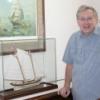
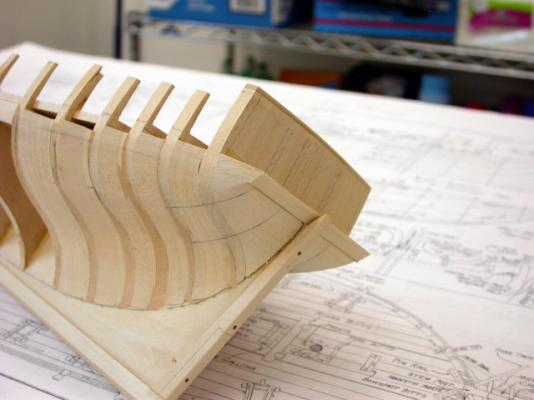
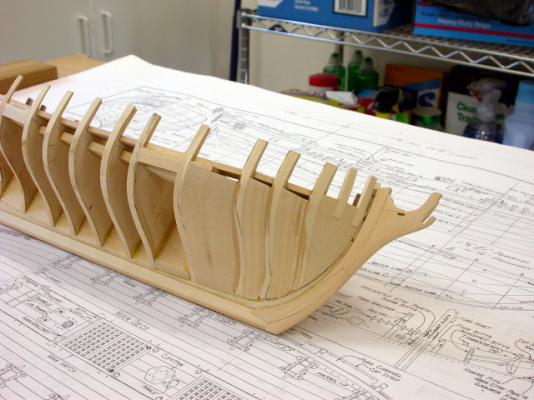
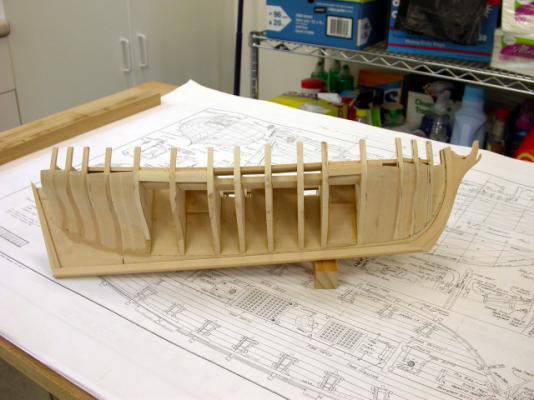
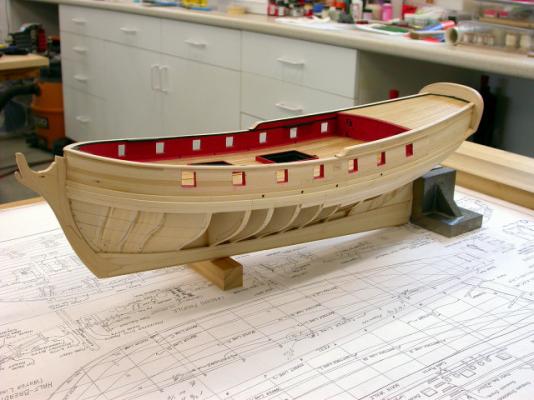
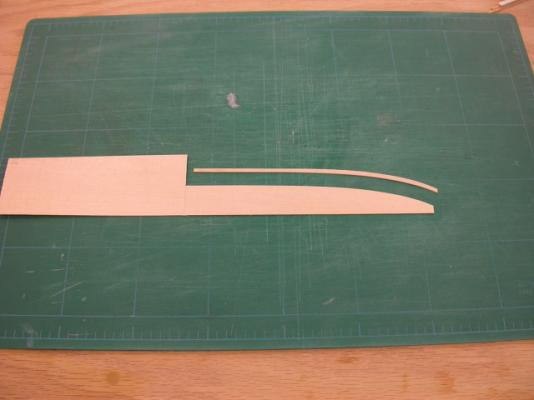
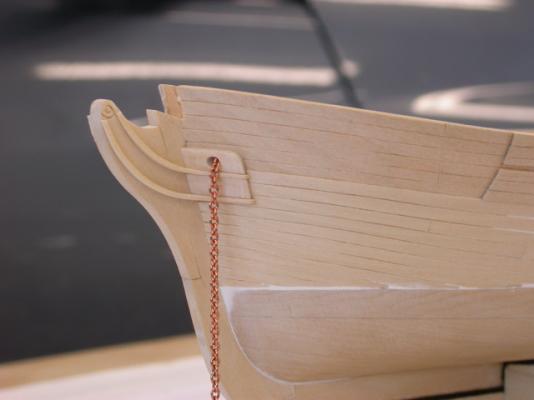
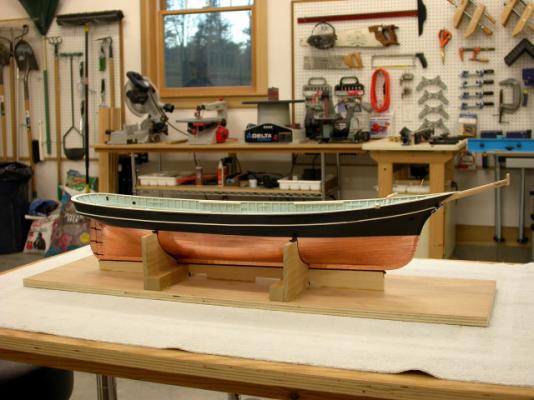
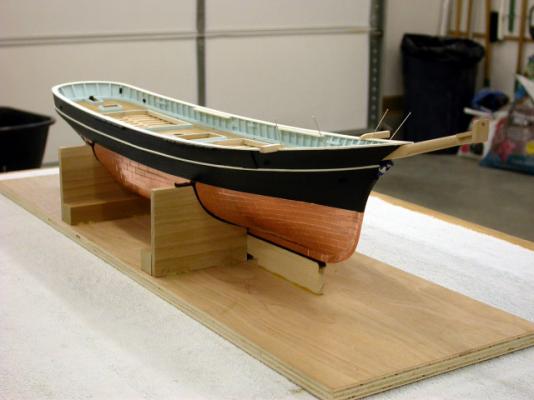
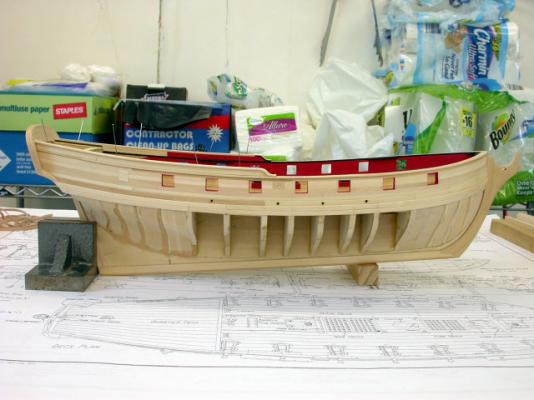
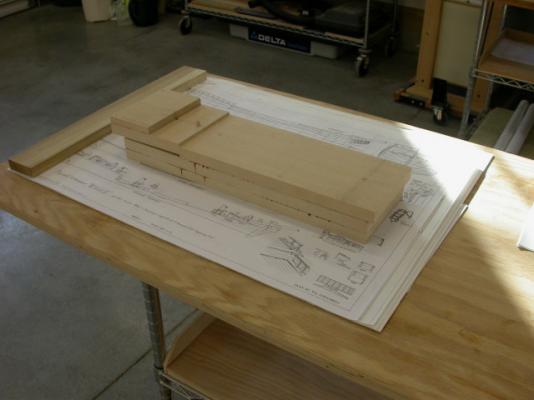
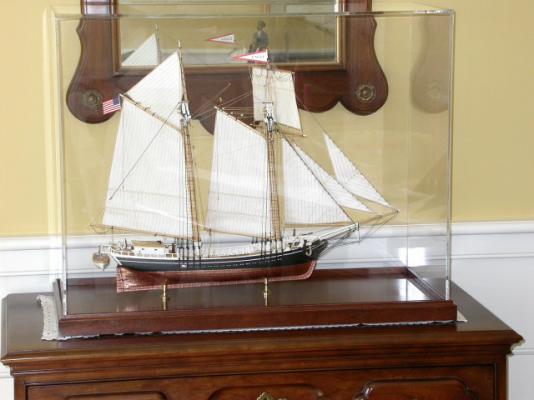
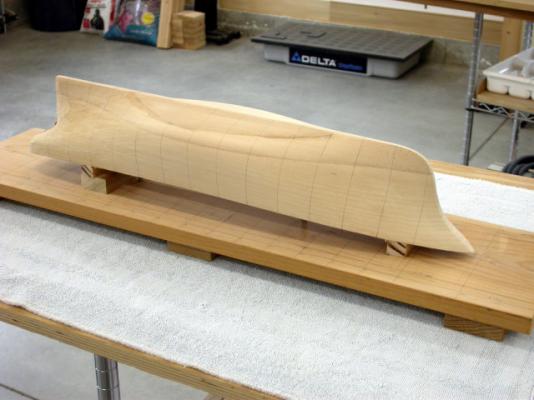
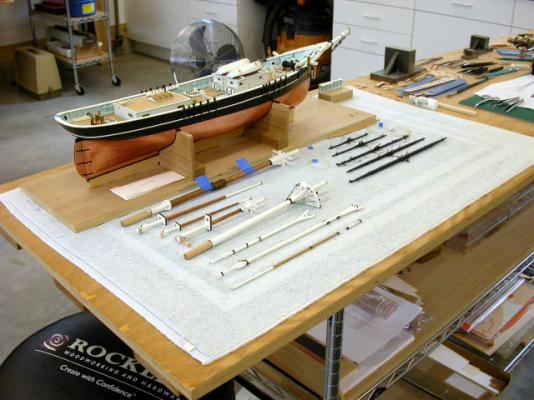


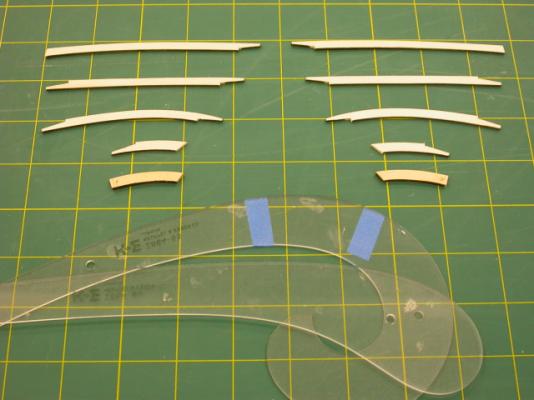
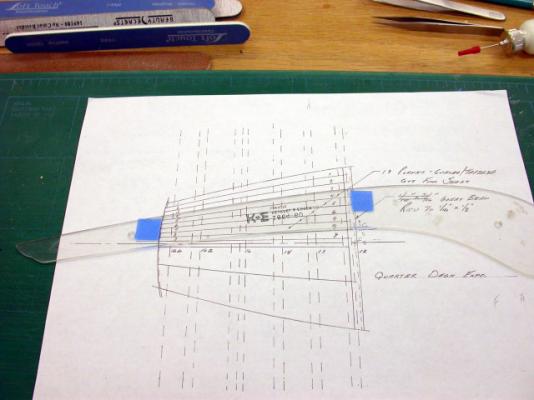
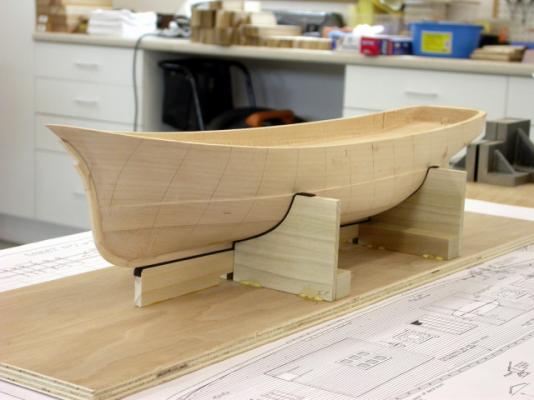
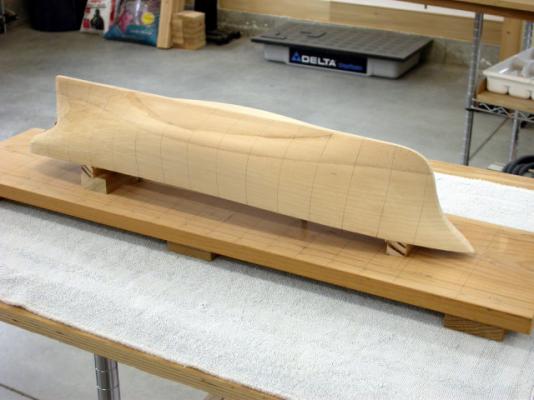
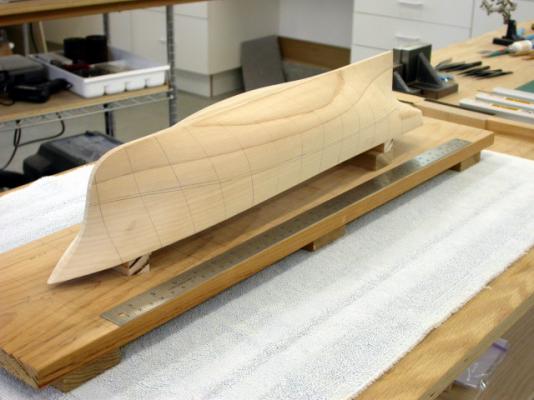
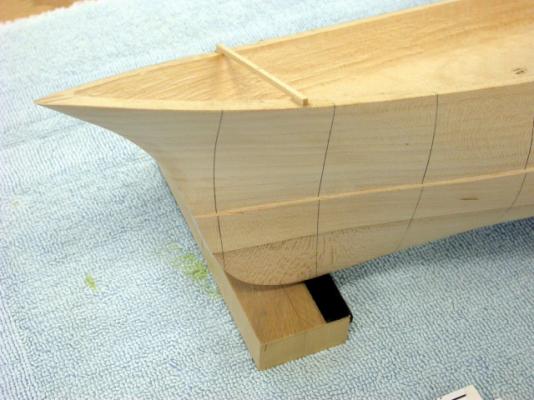
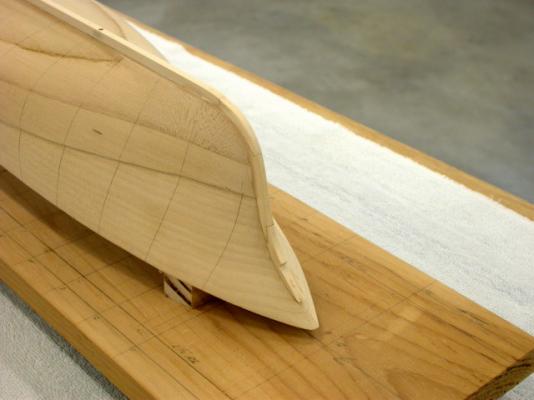
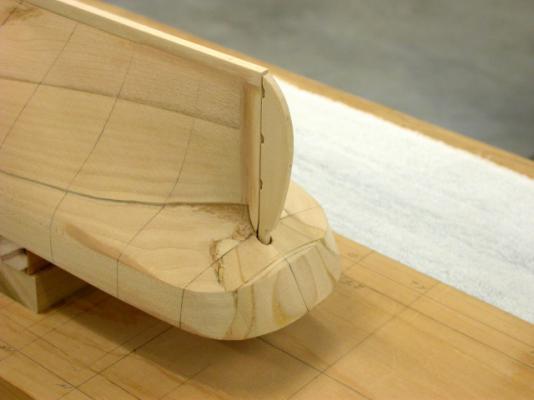
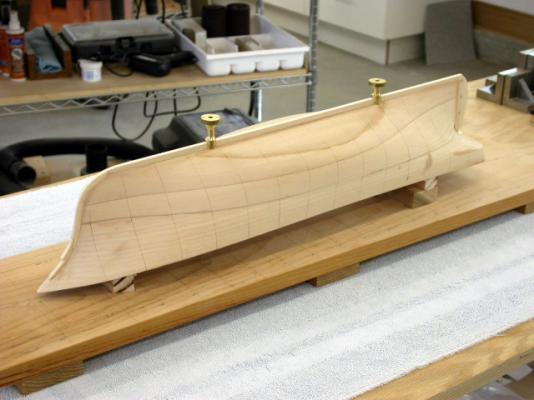
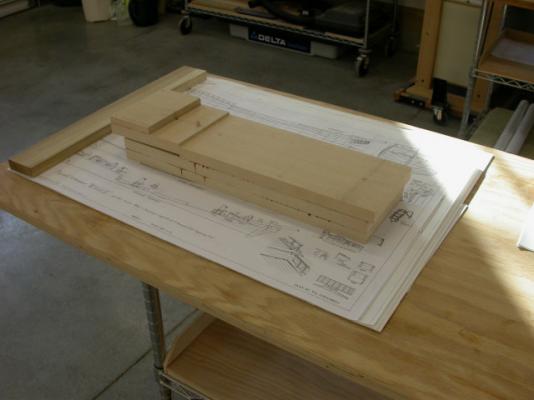
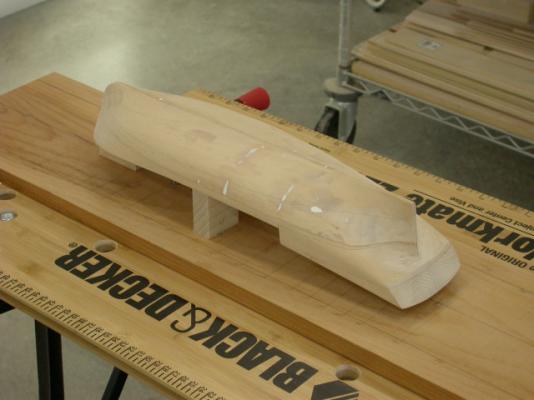

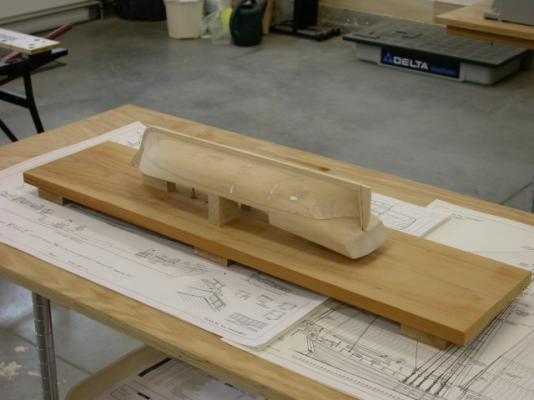
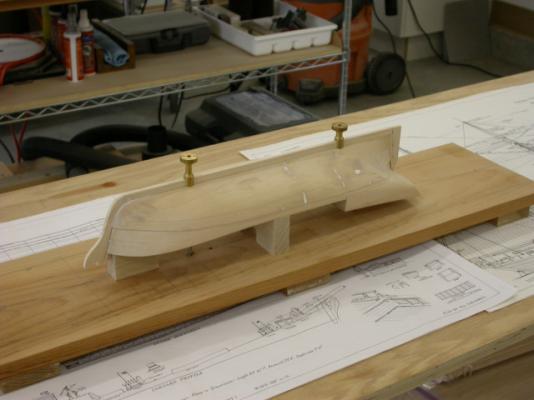

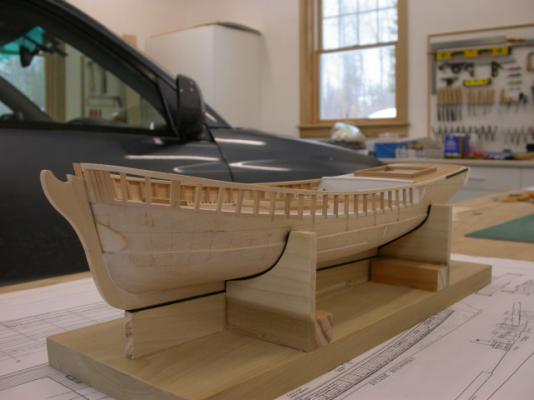
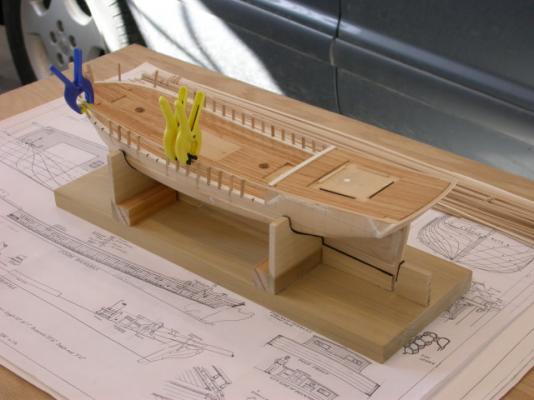
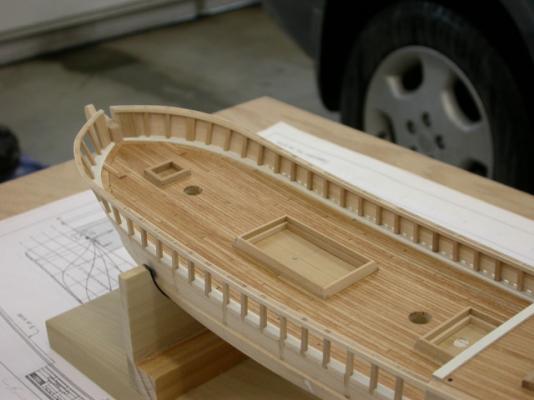
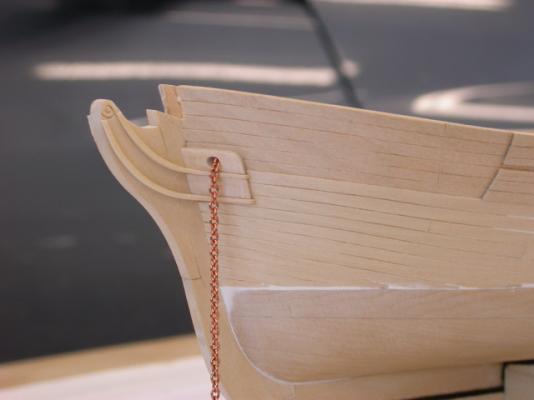
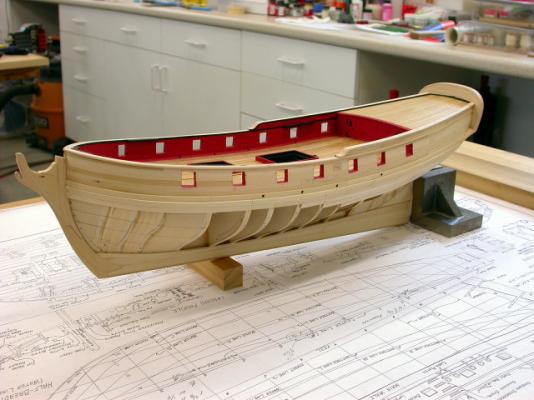
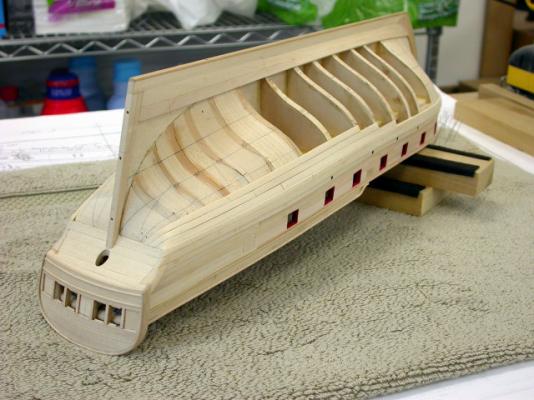
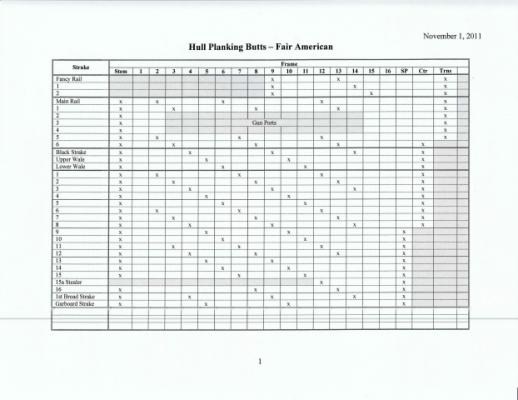
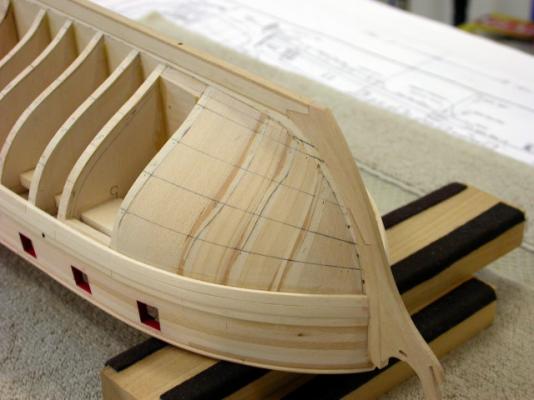
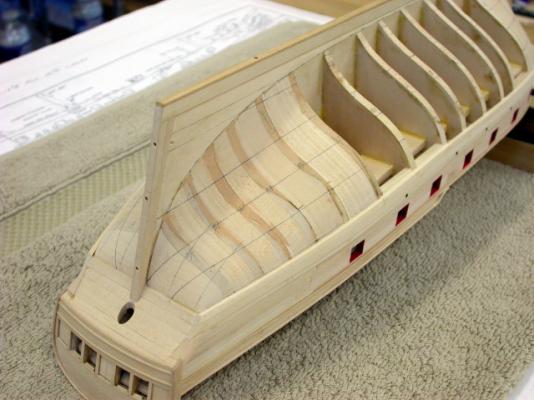
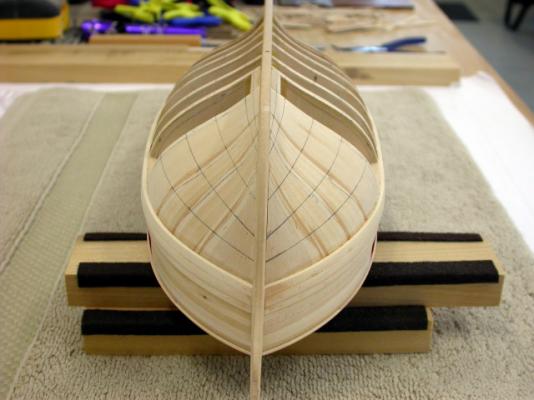
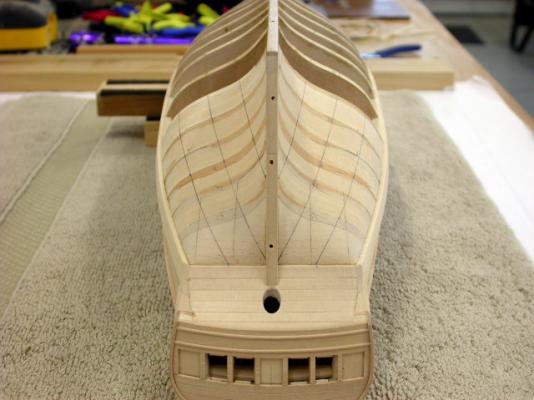
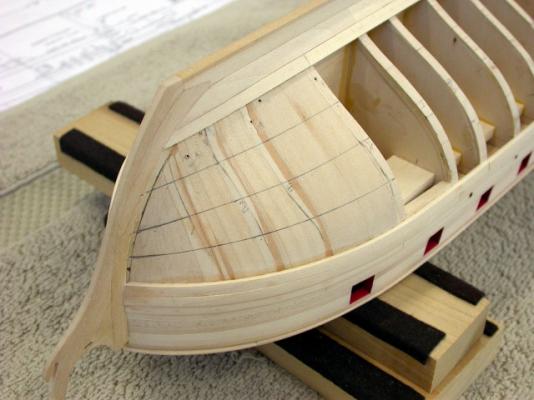
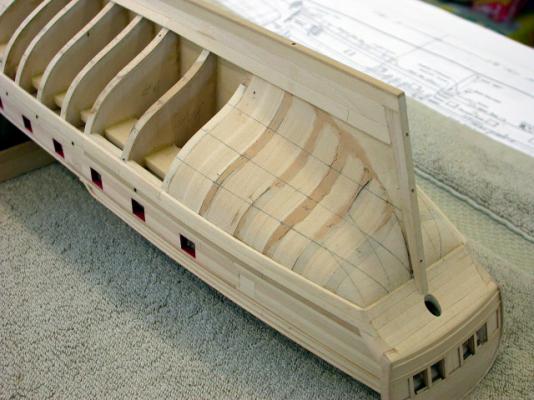

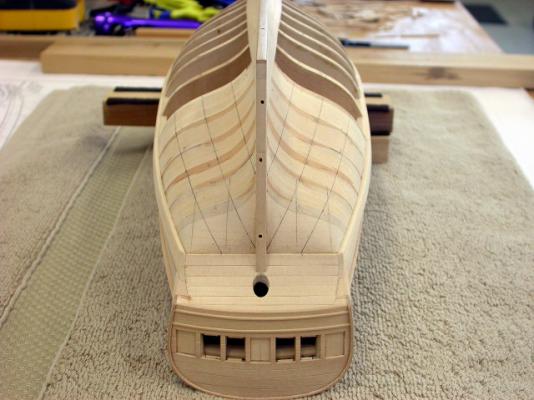
Why no jibboom guys on Fair American?
in Masting, rigging and sails
Posted
Gary,
I have found many examples of missing rigging on MS plans (e.g. my Topsail "Eagle" 1847 plans showed no bowsprit or jib boom guys). I just add what I believe would have been used based on period practice.
Regards,
Pete